This year I am teaching what the district calls Consumer Math, more popularly known as Personal Finance. My seniors are assigned this option when they fail to meet the 2 years of required math, it is a blessing and a curse.
A blessing because I believe all students should learn personal finance so that they can be more successful adults, and the content I present is timely, real-life examples that they can apply. A curse because this class – like other math classes – is approached with a sense of dislike and fear. It has “math” in the title, students are in this class because they have not been able to pass Geometry and therefore, it is to be regarded with something close to loathing.
Pacing Guide and Book
The district has a curriculum and a pacing guide, which this year I asked for and was not given a copy. It has not been revised in over a decade and the school uses a book that is 30 years old. I know the pacing is old because I first wrote it over 10 years ago when I began this class in the district. I know the book is old because 10 years ago, we were using the same book which the district had purchased used for student use. I have come full circle.
The book is so old (great opening for a joke if I were a comic) that it refers to toll calls on your phone. Cell phones and data usage are not discussed (because they did not exist). Word problems quote gas prices of a quarter a gallon ( I live in California where I just filled up the tank at $3.49 a gallon) and talk a lot about reading “maps” to calculate distance. Does anyone do that any more or do we just google what we need, ask Alexa for directions or plug in our GPS?
Personal Finance is More Popular Now
The good news is in the last 10 years more people are talking about personal finance for teens. And because people are more interested there are more resources available than the first time I taught this subject. By the way, these resources are on the internet– an option not mentioned in my book. In fact, the book does not even mention computers.
Resource Round-Up
Here are a few that I have uncovered that are free. There are some I have also found that cost, but with so much available that is free, I started here first:
High School Financial Planning Program https://www.hsfpp.org/about-the-program.aspx
Free resources about earning, investing, insurance, cash flow, financial services, and borrowing.
Dave Ramsey Videos/Blog https://www.daveramsey.com/blog/teach-teenagers-about-money
The blog has a lot of articles about finance for everyone including some tools and calculators. I suggest you preview any videos you show in class. This is a “don’t repeat my mistake” tip. I showed a Ramsey video about putting away money so you can become a millionaire and he was ranting—not the best impression for the first lesson. The other videos were wonderful, but this was an unfortunate choice that I made.
Money Instructor: https://www.moneyinstructor.com/
The site is free, has lessons and worksheets. What I love is that some of the worksheets can be customized. So when I printed out a pay stub for my unit on net wages and payroll deductions, the students were amused that some of the pay stubs had Mrs. Faulk on it as well as President Obama, Oprah Winfrey, and Dr. Phil.
Has lessons for various ages, including a teacher guide and student lesson.
Has a variety of ideas and suggestions for kids, parents, and teachers.
Projects Added
Added to the lessons, worksheets, and activities offered in these links, I added projects to the mix. We started the first week of school by preparing a career project. I love it when an activity or project is a WIN-WIN. It was a win for the students to focus on their future plans and a win for me to get to know them better. If you are interested in this project, here is the link. Career Project
I used the information for several upcoming projects and activities. The job title and beginning salary are used in several activities: budget, buying/renting a house, buying a car. Using real data that the student found is more powerful than assigning them a job or salary. I am also using this info to help students complete tax forms (obviously due in April).
Students will also complete a college project to further investigate career choices, including costs at the colleges cited in the project ( This is scheduled for January and I will post the details here at that time).
Stock market Game
Next semester students will play a six-week session of the Stock Market Game. I have played this several times before and students are always amazed at this look behind the business of their favorite products. I am not expecting any of my students to become day traders (but they can explore the idea ) but I do want them to understand how money can be used to give their lives stability, not just purchase cool shoes (ok, that’s me, I love shoes).
The Stock Market Game has a writing competition component and when I start the game in February I will look into requirements. Participation is free and the site (once you are registered) has a lot of resources for teaching investing. If you want to join me in the Game here is the link: Stock Market Game
Vocabulary Help
Personal finance/consumer math has a lot of vocabulary. I have used Quizlet and the flashcards for student practice and followed up with word searches and crosswords.
See a banking crossword here. I have found that a lot of Math-phobic students are excellent in English class and enjoy writing. So I have added in a lot of writing activities and have them give advice to people about their budgets.
Here is an activity I had them do for Sara Spender and Sammy Saver. I made several versions and when I passed it out, gave the groups different interest rates so they could compare how the savings were growing.
Additional Resources
Though there is a lot of information, most of it is read-answer type worksheets. My students are used to activities in the classroom where we talk, we move and we engage with the content, so I have mixed it up with a few activities I created.
I remember years ago when I first taught this class a student was excited to tell me that she actually used what I taught in class. She said it was the first time in her life she had ever used something she learned in math class. What did she use?
She went out to lunch with her mother and sister and calculated the tip correctly. I was more excited than she was. It was the first time a student told me they had used what I taught.
If you teach Consumer Math or a version of it, I would love to know how it is going. I always enjoy connecting with teachers about ideas in the classroom. Comment here or drop me an email at [email protected].
And I did not forget about the dice activities. I have several I am working on right now and using in the classroom, so get your dice and be ready. If you still need dice, check out the post from last week.
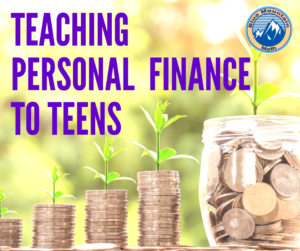
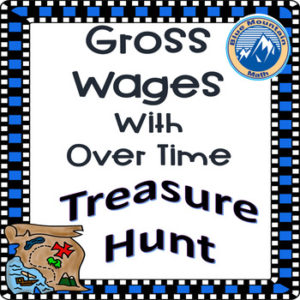
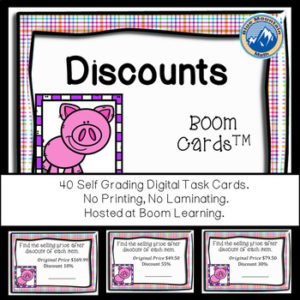
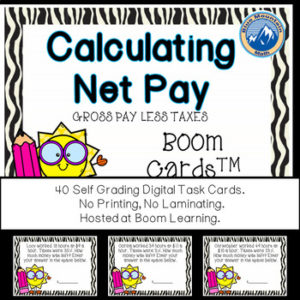
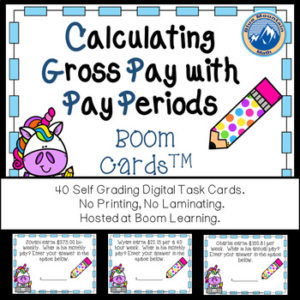
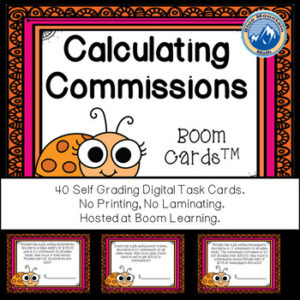










[…] If you still need dice, here are my suggestions in this post:https://bluemountainmath.com/2018/11/04/teaching-teens-personal-finance/ […]